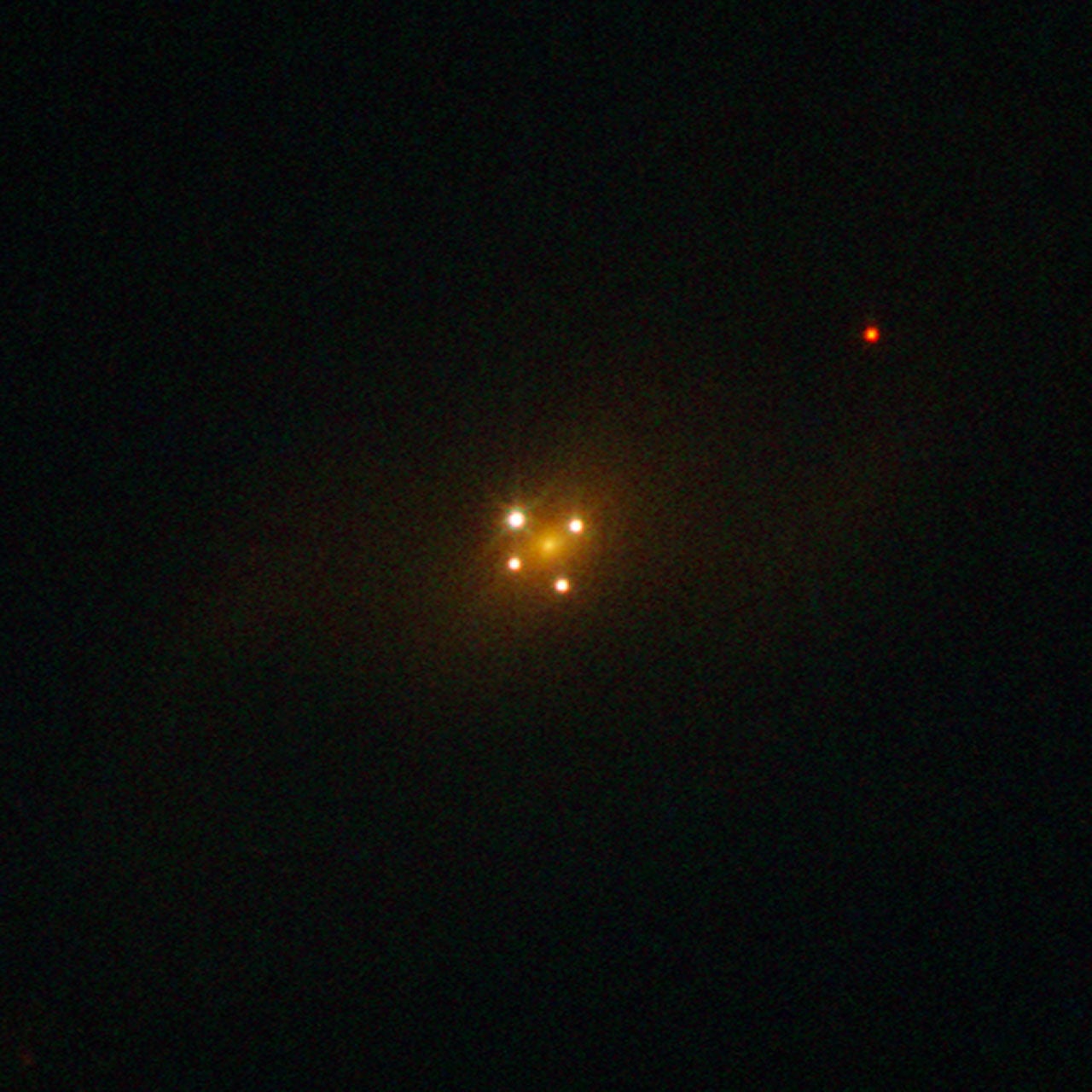
The Einstein Cross (Huchra’s Lens) is one of the most profound examples of gravitational lensing, a phenomenon first deduced by Albert Einstein. Images of the Einstein Cross appear to be a galaxy with four nuclei; this is what Harvard University astronomer John Huchra saw when he discovered this bizarre object.
But these “nuclei” do not belong to the galaxy. Instead, we are seeing the way the gravitational field of the galaxy PGC 69457 (some 400 million light-years distant) is lensing and magnifying the light of the quasar Q2237+0305 (some 8 billion light-years distant), which happens to lie directly behind the galaxy along our line of sight. The gravitational lens (the galaxy) is breaking the quasar’s light into four distinct images of the same object in a crosslike arrangement.
Equally bizarre is that occasionally, the lensed components vary in relative brightness. This microlensing effect occurs whenever a star in the foreground galaxy passes in front of one of the quasar images, causing the image to temporarily intensify.
You’ll find Huchra’s Lens in Pegasus about 2.5° southeast of 37 Pegasi. While the brightness of the components can range anywhere from magnitude 15.5 to 18.5 depending on microlensing effects, some observers have estimated the combined lens shines as brightly as magnitude 14 — or about the average brightness of Pluto. Then again, that light is spread across 1.6′. The intervening galaxy shines around magnitude 15. High powers (400x to 600x) may show it best.
Several amateur astronomers have succeeded in separating two components with telescopes as small as 18 inches. The fainter components likely require 24-inch and larger telescopes.









